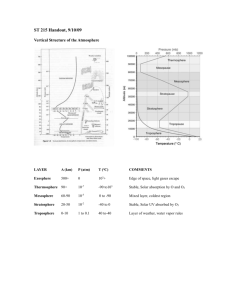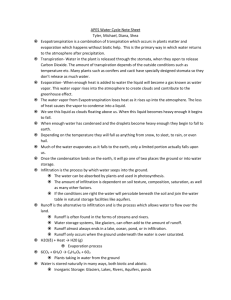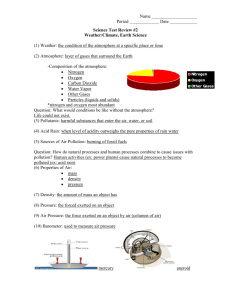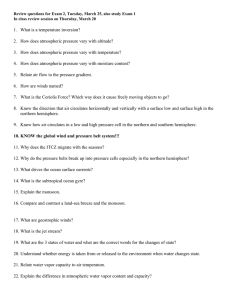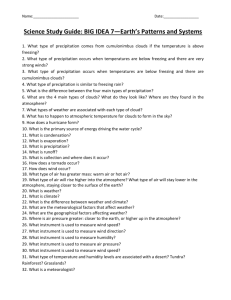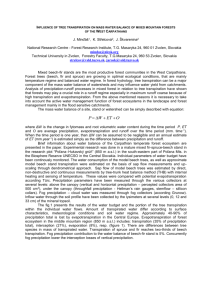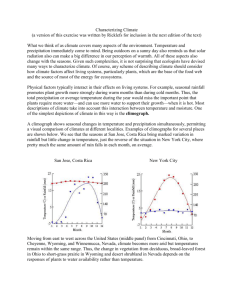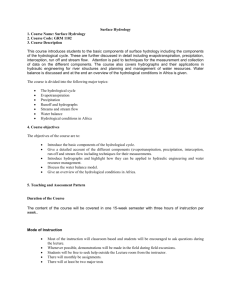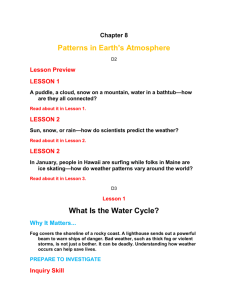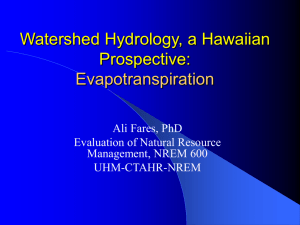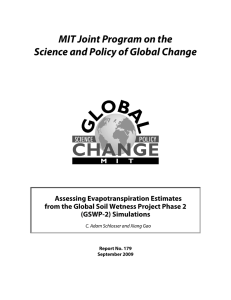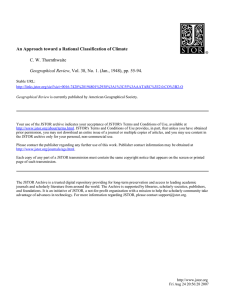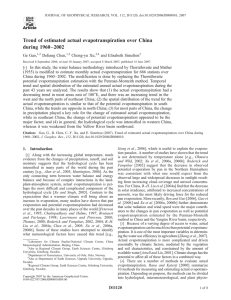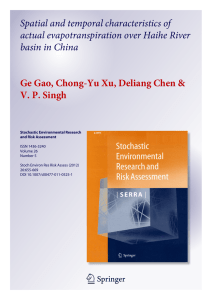Water Budget
advertisement
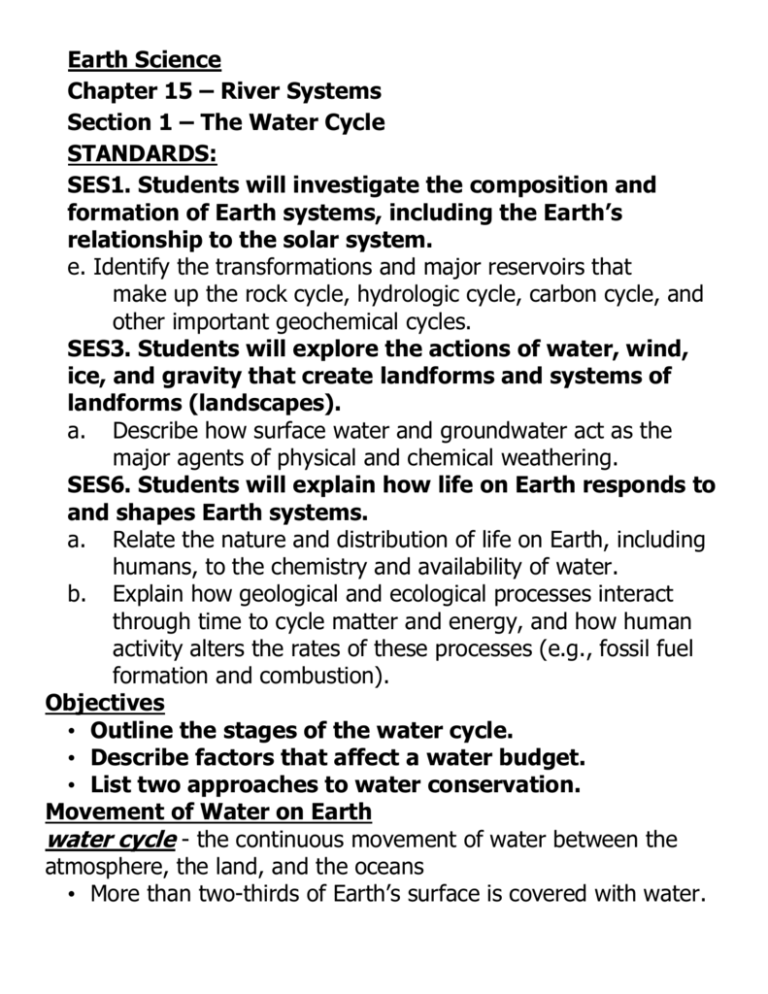
Earth Science Chapter 15 – River Systems Section 1 – The Water Cycle STANDARDS: SES1. Students will investigate the composition and formation of Earth systems, including the Earth’s relationship to the solar system. e. Identify the transformations and major reservoirs that make up the rock cycle, hydrologic cycle, carbon cycle, and other important geochemical cycles. SES3. Students will explore the actions of water, wind, ice, and gravity that create landforms and systems of landforms (landscapes). a. Describe how surface water and groundwater act as the major agents of physical and chemical weathering. SES6. Students will explain how life on Earth responds to and shapes Earth systems. a. Relate the nature and distribution of life on Earth, including humans, to the chemistry and availability of water. b. Explain how geological and ecological processes interact through time to cycle matter and energy, and how human activity alters the rates of these processes (e.g., fossil fuel formation and combustion). Objectives • Outline the stages of the water cycle. • Describe factors that affect a water budget. • List two approaches to water conservation. Movement of Water on Earth water cycle - the continuous movement of water between the atmosphere, the land, and the oceans • More than two-thirds of Earth’s surface is covered with water. • In the atmosphere, water occurs as an invisible gas. This gas is called water vapor. Liquid water also exists in the atmosphere as small particles in clouds and fog. • Earth’s water is constantly changing from one form to another. Evapotranspiration • evapotranspiration the total loss of water from an area, which equals the sum of the water lost by evaporation from the soil and other surfaces and the water lost by transpiration from organisms • Each year, about 500,000 km3 of water evaporates into the atmosphere. About 86% of this water evaporates from the ocean. • Water vapor also enters the air by transpiration, the process by which plants and animals release water vapor into the atmosphere. Condensation • condensation - the change of state from a gas to a liquid • When water vapor rises in the atmosphere, it expands and cools. • As the vapor becomes cooler; some of it condenses, or changes into tiny liquid water droplets, and forms clouds. precipitation - any form of water that falls to Earth’s surface from the clouds; includes rain, snow, sleet, and hail • About 75% of all precipitation falls on Earth’s oceans. The rest falls on land and becomes runoff or groundwater. • Eventually, all of this water returns to the atmosphere by evapotranspiration, condenses, and falls back to Earth’s surface to begin the cycle again. The image below shows the water cycle READING CHECK List the forms of precipitation. Precipitation is any form of water that falls to Earth from the clouds, including rain, snow, sleet, and hail. Water Budget • In Earth’s water budget, precipitation is the income. Evapotranspiration and runoff are the expenses. • The water budget of Earth as a whole is balanced because the amount of precipitation is equal to the amount of evapotranspiration and runoff. • However, the water budget of a particular area, called the local water budget, is usually not balanced. Factors That Affect the Water Budget • Factors that affect the local water budget include temperature, vegetation, wind, and the amount and duration of rainfall. • The factors that affect the local water budget vary geographically. • The local water budget also changes with the seasons in most areas of Earth. Water Use • On average, each person in the United States uses about 95,000 L (20,890.5 gal) of water each year. • As the population of the United States increases, so does the demand for water. • About 90% of the water used by cities and industry is returned to rivers or to the oceans as wastewater. • Some of this wastewater contains harmful materials, such as toxic chemicals and metals. Conservation of Water • Scientists have identified two ways to ensure that enough fresh water is available today and in the future. • One way is through conservation or the wise use of water resources. • A second way to protect the water supply is to find alternative methods of obtaining fresh water. desalination - a process of removing salt from ocean water • Desalination is expensive and is impractical for supplying water to large populations. • Currently, the best way of maintaining an adequate supply of fresh water is the wise use and conservation of the fresh water that is now available.



